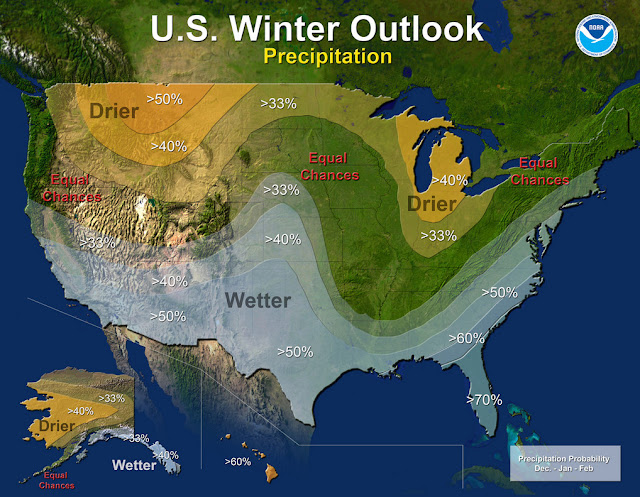The year that was lacked any major drama in terms of the weather. Winter and severe weather conditions during their seasons were pretty typical. Overall, the year saw temperatures and precipitation end above average.
Thornton’s average annual temperature for 2015 came in at 51.1 degrees. That was a bit above Denver’s historical average of 50.5 degrees. Out at DIA where the Mile High City’s official measurements were taken, the average was 52.0 degrees. Denver’s reading made the year the 18th warmest on record.
Temperatures in Thornton ranged from a high of 98.1 degrees on August XX down to a low of -3.7 degrees on January XX. We saw 44 days of high temperatures at or above 90 degrees and 131 days with low temperatures below the freezing mark.
Out at the airport, Denver saw a maximum of 98 degrees on August 15 and a low of 10 degrees below zero on January 4. Officially the city saw 48 90 degrees days and 126 days with lows below freezing.
Denver averages 39.6 days of 90 degrees temperatures and 156.9 days with lows below 32 degrees.
In terms of precipitation, both Thornton and Denver saw their rain buckets record above normal levels. Thornton measured 20.81 inches while DIA was drier with 18.31 inches. Both marks were well above the annual average of 14.30 inches. For Denver, it was the 25th wettest year on record.
Snow as well finished above normal for the calendar year. Average is 53.8 inches. Thornton recorded a hefty 72.1 inches of the white stuff. Denver lagged us but was still above average with 64.4 inches. February was the snowiest month for both locations with Thornton recording 26.7 inches and Denver 22.4 inches.
Click here to view Thornton’s 2015 climate summary report.
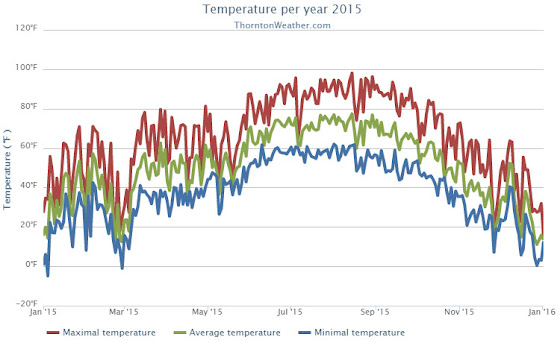
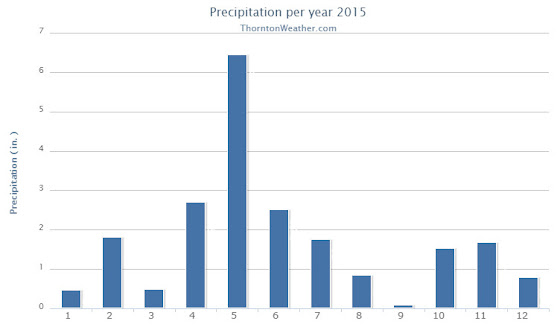
From the National Weather Service:
CLIMATE REPORT
NATIONAL WEATHER SERVICE BOULDER, CO
730 AM MST SAT JAN 2 2016
...................................
...THE DENVER CO CLIMATE SUMMARY FOR THE YEAR OF 2015...
CLIMATE NORMAL PERIOD 1981 TO 2010
CLIMATE RECORD PERIOD 1872 TO 2015
WEATHER OBSERVED NORMAL DEPART LAST YEAR`S
VALUE DATE(S) VALUE FROM VALUE DATE(S)
NORMAL
................................................................
TEMPERATURE (F)
RECORD
HIGH 105 06/26/2012
06/25/2012
07/20/2005
LOW -29 01/09/1875
HIGHEST 98 08/15 64 34 100 07/07
LOWEST -10 01/04 36 -46 -19 12/30
02/05
AVG. MAXIMUM 65.4 64.7 0.7 64.6
AVG. MINIMUM 38.6 36.3 2.3 36.5
MEAN 52.0 50.5 1.5 50.5
DAYS MAX >= 90 48 39.6 8.4 29
DAYS MAX <= 32 29 20.0 9.0 24
DAYS MIN <= 32 126 156.9 -30.9 150
DAYS MIN <= 0 7 5.8 1.2 14
PRECIPITATION (INCHES)
RECORD
MAXIMUM 23.31 1967
MINIMUM 7.29 2008
TOTALS 18.31 14.30 4.01 18.77
DAILY AVG. 0.05 0.03 0.02 0.05
DAYS >= .01 107 79.7 27.3 98
DAYS >= .10 49 34.9 14.1 44
DAYS >= .50 10 7.6 2.4 10
DAYS >= 1.00 2 2.3 -0.3 4
GREATEST
24 HR. TOTAL 1.41 04/16 TO 04/17 2.85 07/29 TO 07/30
SNOWFALL (INCHES)
RECORDS
TOTAL 115.9 1913
24 HR TOTAL 23.6 12/24/1982 TO 12/24/1982
SNOW DEPTH MM MM
TOTALS 64.4 53.8 10.6 46.1
LIQUID EQUIV 6.44 5.40 1.04 4.61
SINCE 7/1 22.6 22.5 0.1 16.0
LIQUID 7/1 2.26 2.20 0.06 1.60
SNOWDEPTH AVG. 0 MM MM 0
DAYS >= TRACE 51 33.3 17.7 55
DAYS >= 1.0 25 16.3 8.7 17
GREATEST
SNOW DEPTH 9 02/23 6 12/31
STORM TOTAL 10.5 5.9
(MM/DD(HH)) 02/20 TO 02/23 12/29 TO 12/30
DEGREE_DAYS
HEATING TOTAL 5479 6059 -580 5844
SINCE 7/1 2187 2468 -281 2291
COOLING TOTAL 877 769 108 701
SINCE 1/1 877 769 108 701
FREEZE DATES
RECORD
EARLIEST 09/08/1962
LATEST 06/08/2007
EARLIEST 10/07
LATEST 05/05
..................................................
WIND (MPH)
AVERAGE WIND SPEED 9.6
RESULTANT WIND SPEED/DIRECTION 2/195
HIGHEST WIND SPEED/DIRECTION 46/350 DATE 11/17
HIGHEST GUST SPEED/DIRECTION 60/330 DATE 07/15
SKY COVER
POSSIBLE SUNSHINE (PERCENT) MM
AVERAGE SKY COVER 0.60
NUMBER OF DAYS FAIR 80
NUMBER OF DAYS PC 208
NUMBER OF DAYS CLOUDY 77
AVERAGE RH (PERCENT) 56
WEATHER CONDITIONS. NUMBER OF DAYS WITH
THUNDERSTORM 71 MIXED PRECIP 0
HEAVY RAIN 14 RAIN 36
LIGHT RAIN 101 FREEZING RAIN 0
LT FREEZING RAIN 4 HAIL 5
HEAVY SNOW 9 SNOW 31
LIGHT SNOW 53 SLEET 1
FOG 111 FOG W/VIS <= 1/4 MILE 40
HAZE 58
- INDICATES NEGATIVE NUMBERS.
R INDICATES RECORD WAS SET OR TIED.
MM INDICATES DATA IS MISSING.
T INDICATES TRACE AMOUNT.
_____________________________________________________________________
..........2015 WAS WETTER AND WARMER THAN NORMAL..........
.........................TEMPERATURES...........................
TEMPERATURES FOR 2015 FINISHED ABOVE NORMAL WITH A MEAN OF 52.0
DEGREES F. WHICH IS 1.5 DEGREES ABOVE NORMAL. THIS MAKES 2015 THE
18TH WARMEST YEAR ON RECORD. THERE WERE 48 DAYS IN WHICH THE
TEMPERATURE REACHED OR EXCEEDED 90 DEGREES AND NO DAYS REACHING THE
CENTURY MARK. AUGUST 15TH WAS THE HOTTEST DAY OF YEAR WITH A
TEMPERATURE OF 98 DEGREES. THERE WERE 4 DAYS DURING THE YEAR IN
WHICH THE TEMPERATURE FELL BELOW ZERO. THE COLDEST TEMPERATURE
RECORDED FOR THE YEAR OCCURRED ON JANUARY 4TH WITH A READING OF TEN
DEGREES BELOW ZERO.
MONTH MEAN TEMP DEPARTURE WARMEST COLDEST
(DEGREES F)FROM NORMAL (DEGREES F) (DEGREES F)
JANUARY 33.0 +3.2 40.3(1986) 16.8(1930)
FEBRUARY 33.8 +1.3 43.7(1954) 17.7(1899)
MARCH 45.0 +4.6 50.4(1910) 26.4(1912)
APRIL 48.7 +1.3 56.4(1981) 38.8(1920)
MAY 53.0 -4.1 64.7(1934) 48.7(1917)
JUNE 69.5 +2.1 75.0(2012) 60.6(1967)
JULY 72.8 -1.4 78.9(2012) 67.3(1895)
AUGUST 74.0 +1.5 77.0(2011) 66.5(1915)
SEPTEMBER 69.4 +6.0 69.4(2015) 54.7(1912)
OCTOBER 56.5 +5.6 59.9(1950) 38.9(1969)
NOVEMBER 38.5 +0.2 50.9(1949) 22.0(1930)
DECEMBER 29.4 -0.6 43.8(1933) 17.4(1983)
ANNUAL 52.0 +1.5 54.9(1934) 47.8(1912)
.......................PRECIPITATION............................
2015 WAS A GOOD YEAR FOR PRECIPITATION IN DENVER. THE FINAL TALLY
FOR THE YEAR WAS 18.31 INCHES WHICH IS 4.01 INCHES ABOVE THE NORMAL
OF 14.30 INCHES. THIS MAKES 2015 THE 25TH WETTEST YEAR ON RECORD.
MONTH PRECIP DEPARTURE WETTEST DRIEST
(INCHES) FROM NORMAL (INCHES) (INCHES)
JANUARY 0.38 -0.03 2.25(1883) 0.01 (1952...1934...1933)
FEBRUARY 1.25 +0.88 2.01(1934) 0.01(1970)
MARCH 0.79 -0.13 4.56(1900) 0.03(1963)
APRIL 2.65 +0.94 8.24(1900) 0.03(1963)
MAY 3.76 +1.64 8.57(1876) 0.06(1974)
JUNE 2.53 +0.55 4.96(1882) T (1890)
JULY 1.06 -1.10 6.41(1965) 0.01(1901)
AUGUST 1.18 -0.51 5.85(1979) 0.02(1924)
SEPTEMBER 0.11 -0.85 5.61(2013) T (1892...1944)
OCTOBER 1.76 +0.74 4.17(1969) T (1934)
NOVEMBER 2.13 +1.52 3.21(1946) T (1899...1901...1949)
DECEMBER 0.71 +0.36 5.21(1913) 0.00(1881)
ANNUAL 18.31 +4.01 23.31(1967) 7.29(2008)
...........................SNOWFALL..............................
64.4 INCHES OF SNOW FELL IN 2015...WHICH IS 10.6 INCHES ABOVE THE
NORMAL OF 53.8 INCHES. FEBRUARY 2015 WAS SNOWIEST FEBRUARY ON
RECORD WITH 22.4 INCHES OF SNOW MEASURED AT DENVER INTERNATIONAL
AIRPORT. SNOW ALSO FELL IN DENVER ON CHRISTMAS DAY...WITH 2.3
MEASURED AT THE AIRPORT.
MONTH SNOWFALL DEPARTURE SNOWIEST LEAST SNOWIEST
(INCHES) FROM NORMAL (INCHES) (INCHES)
JANUARY 7.2 -0.2 24.3(1992) T (2003...1934)
FEBRUARY 22.4 +16.7 22.4(2015) T (2009)
MARCH 2.9 -7.8 35.2(2003) T (2012...1995)
APRIL 5.3 -1.5 33.8(1933) 0 (1995...1992...1943...1930)
MAY 4.0 +2.9 15.5(1898) 0 (NUMEROUS YEARS)
SEPTEMBER 0.0 -1.3 17.2(1971) 0 (NUMEROUS YEARS)
OCTOBER 0.0 -4.0 31.2(1969) 0 (NUMEROUS YEARS)
NOVEMBER 11.3 +2.6 42.6(1946) 0 (1995)
DECEMBER 11.3 +2.8 57.4(1913) 0 (1881)
ANNUAL 64.4 +10.6 115.9(1913) 18.9(1887)




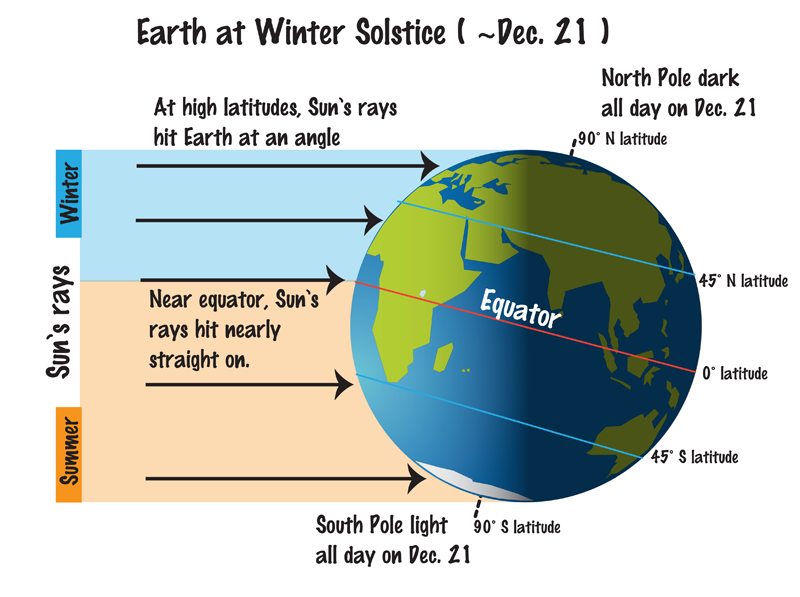


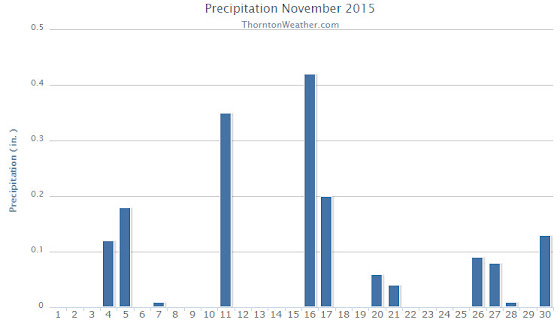
 The month of December brings with it the official start of winter and oftentimes, colder and snowier weather conditions. It however can also offer unseasonably warm temperatures and bone dry conditions.
The month of December brings with it the official start of winter and oftentimes, colder and snowier weather conditions. It however can also offer unseasonably warm temperatures and bone dry conditions.


 The weather during the month of November in Denver metro area can offer just about anything. While it is normally a quiet month, it can be prone to extremes.
The weather during the month of November in Denver metro area can offer just about anything. While it is normally a quiet month, it can be prone to extremes.
